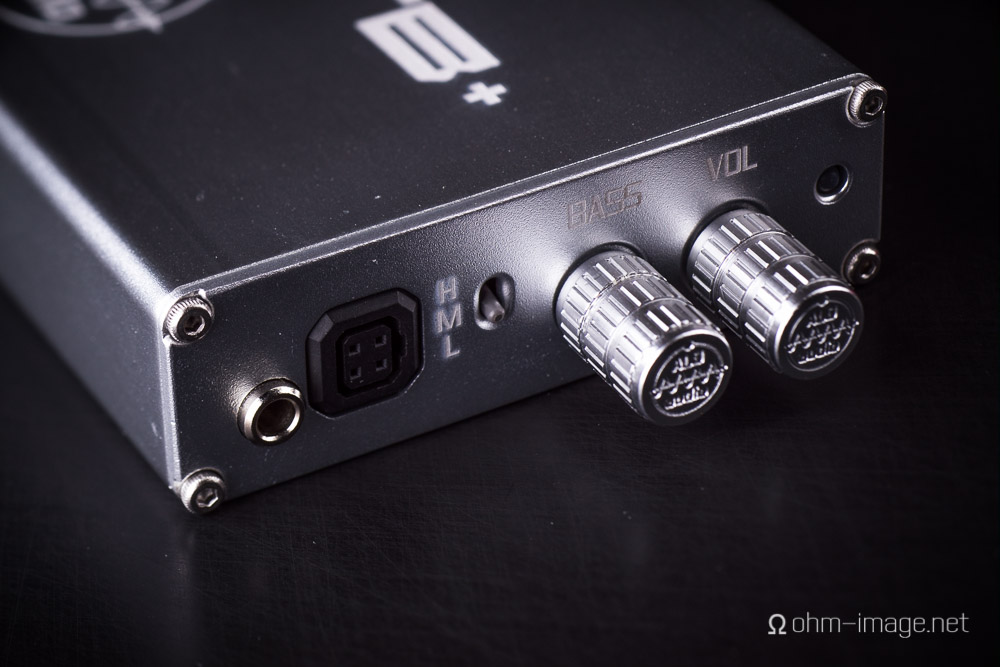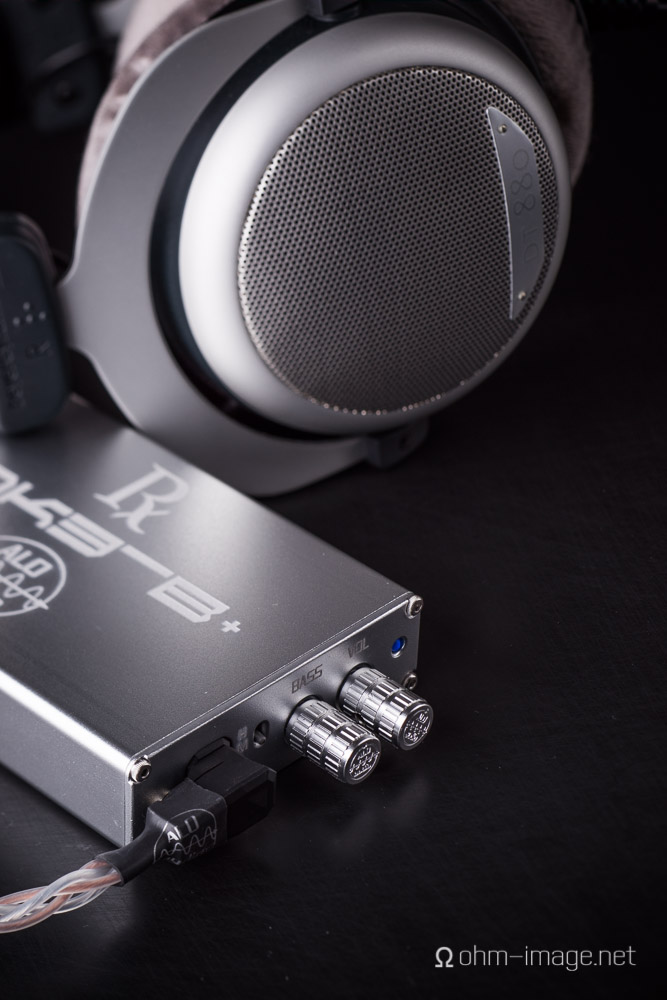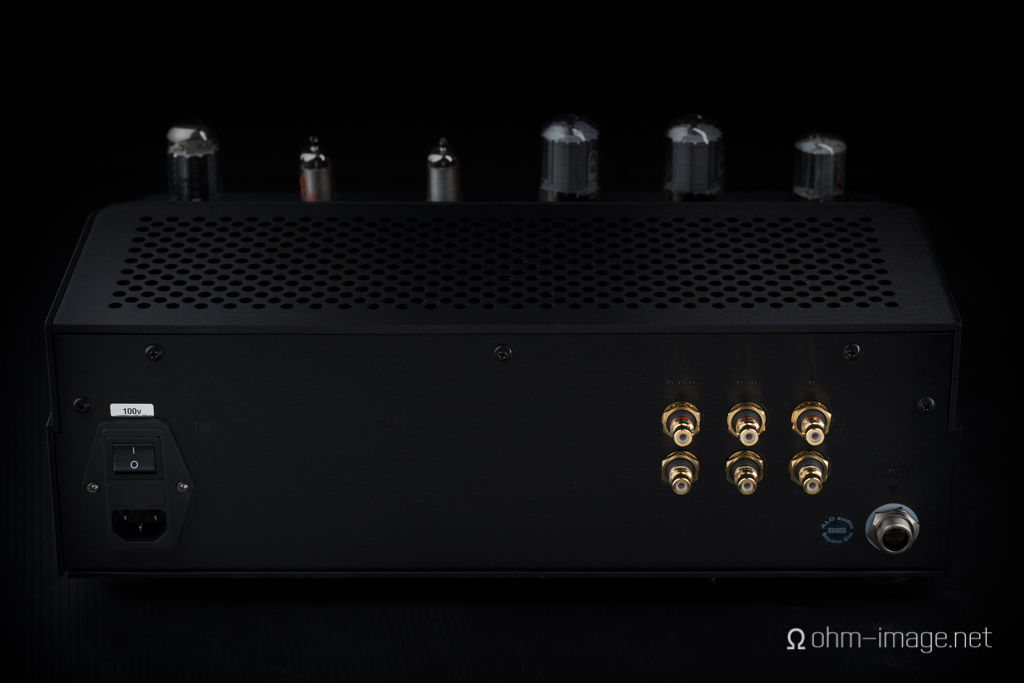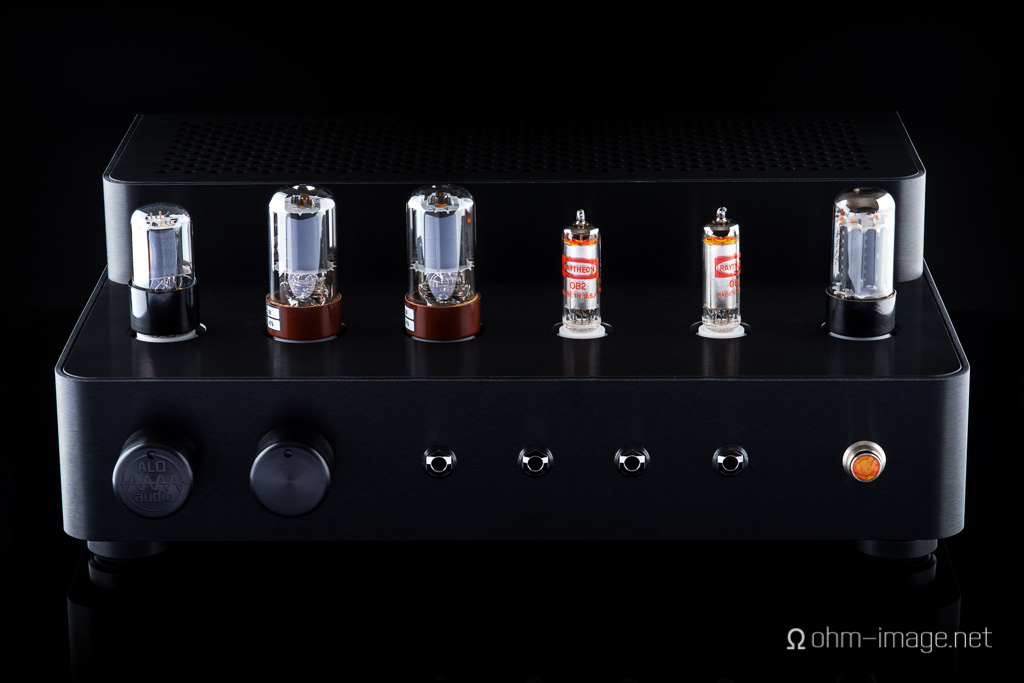Subject: ALO Rx IEM amplifier
ohmage: RMAA: ALO Audio Rx 24-bit
f your ALO Rx's gain is a bit too aggressive, contact ALO. They'll tailor it to your sensitive earphones. Or, if you need more gain, they'll do the same thing in reverse. And, as always, they've got a 30-day money back guarantee just in case.
instant ohmage: ALO Rx MKIII-B+
The age of good battery life, massive power, and freaking amazing gain control is upon us. It’s the age of the ALO Rx MKIII-B+, an age that cooks your beans without over-cooking them, you know what I mean?
Read moreCurrawong reviews the ALO Studio Six
Currawong, Headfi's prim and knowledgeable moderator-extraorindaire, has, at long last, published his review of the excellent ALO Studio Six headphone amp. Generally, and with good reason, he is ecstatic. But without intending to detract from the original text, I will point out that while Curra and I both agree that the Studio Six is an unwavering delight of power and resolution for headphones, we each await an ALO Audio power amp.
“The performance of the amp is so unwavering that even if one plugs 4 completely different pairs of headphones in, even IEMs, the performance through any single pair does not change in the slightest. The question I had at the end of it all was not about whether the amp is worth it, but why it didn’t have speaker outputs. Ken Ball’s reply to this question was to send me a custom cable with a headphone plug on one end and speaker banana plugs on the other.”
For those with short memories, here is what I wrote about the Studio Six.
ALO's new The Island hi-res USB DAC
This rather flashy-looking USB DAC is ALO Audio's new The Island. It will go toe to toe with Meridian's Explorer and the glut of USB interfaces that have hit the market lately. Unique to The Island is balanced headphone output. And of course the bright colour schemes. And the giant three-stage volume pot on top- something I think headphone lovers will really appreciate.
Otherwise, The Island's rather hi-flight specs, and its 299$ USD price fall in line with what is out there today.
Description:
The power and performance of balanced audio has arrived in The Island. Spacious sound stages are delivered with a superior sonic punch. Chewy bass lines underpin sparkling highs.
Specially machined volume knob paired with 3 gain stages gives you finer control of your listening, regardless of your headphone selection. The 24 Bit / 192 kHz capable Cirrus Logic CS4398 DAC chip offers plug and play convenience with high-fidelity asynchronous fully balanced performance on both PC and Mac. (PC’s require included drivers for 24 Bit /192 kHz playback.)
A simple design and anodized aluminum enclosure makes The Island a solid choice for portable listening with your laptop as well as home desktop listening sessions. Available in Blue, Gold, Silver and Black anodized finishes.
Tech specs:
Input 1 x mini -USB
Output 1 x 3.5mm stereo jack socket
Output 1 x Stereo jack(Balanced)
Input: USB 2.0 Audio
Output: stereo analog, balanced
Sampling Frequency
44.1kHz, 48kHz, 88.2kHz, 96kHz, 176.4khZ, 192kHz
Resolution
16 up to 24 bit
Output power-Balanced :
130mW @32 Ohms
200mW @50 Ohms
160mW @300 Ohms
83mW @600 Ohms
Output power-Unbalanced :
130mW @32 Ohms
200mW @50 Ohms
660mW @300 Ohms
330mW @600 Ohms
Frequency response:
5-22kHz (+/-1dB)
THD+N:
0.001% @ 1kHz
Power:
5V DC from USB bus .
Amber indicator light illuminates when powered.
ohmage to the ALO Studio Six
Big things come in bigger packages. (And big packages generally must be scooted down the hall in push-pull spouse trains.) ALO Audio's debut desktop amp is leviathan big. Still, I managed to plop it on top of my HiFi all by my lonesome. There, at the summit of my living room, it perches from a spiritual position I believe it truly earns: the top.
Spec:
Headphone impedance compatibility range:
8 Ohms to 600 Ohms
Maximum rated output power:
1,000 milliwatts into 8 to 32 Ohms
Amplifier input impedance:
95k-Ohms
Amplifier input Voltage for full-rated output voltage into various headphone impedances:
1.00V RMS input for 4.0V RMS output into 16 Ohms
1.30V RMS input for 5.7V RMS output into 32 Ohms
1.70V RMS input for 7.5V RMS output into 75 Ohms
1.85V RMS input for 8.3V RMS output into 150 Ohms
1.70V RMS input for 8.2V RMS output into 300 Ohms
1.65V RMS input for 8.1V RMS output into 600 Ohms
THD+N (1kHz input) at 1V RMS output into stated load impedances:
32 Ohms: 0.26%
150 Ohms: 0.12%
THD+N (1kHz input) at 250 milliwatts output into stated impedances:
32 Ohms: 1.0%
150 Ohms: 2.0%
Frequency Response -3dB (Referenced to 1kHz, 250 milliwatts output) into stated impedances:
32 Ohms: 6.0Hz to 39kHz
150 Ohms: 16.5Hz to 36kHz
Frequency Response -1dB at full-rated (2.83V RMS) 1,000 milliwatt output into 8 Ohms:
15Hz to 20kHz
S/N Ratio:
78dB (unweighted) below full 2.83V RMS output into 8 Ohms
ALO Audio Studio Six: ~4.900$ USD and up
ohmage: haptics
The Studio Six pushes a Sasquatch-sized footprint into your HiFi station, but its interface is as easy as falling off a log. The front panel is graced by two large rotating knobs. The one on the left clicks between three positions which correspond to inputs. The glorious one to its right is the volume pot, which is as smoothly damped as a Leica lens. The bastard child of Rockwell and Knobfeel would glory in its silky, one-fingerable operation.
The back panel arrays gold-plated RCA inputs directly behind the input selector knob. A mysterious port dubbed Accessory Power Connection sits below. Opposite it are the volume switch and accompanying ATX port.
The Studio Six is single-ended, in and out.
ohmage: kitsch
Here at KitschWatch, we approach things like glitter, buffed plastic, chromed polyurinethane, and so on, with thumbs turned way down. My nose says that ALO, too, are anti-kitsch. The Studio Six is laser etched, bolted, and bent to precision. Its knobs are precise and damped, and its inputs are so firm in the chassis they are practically part of it.
ALO make one thing very clear: that you know this amp was made by them. It was designed and built in the USA, and it is made to last.
ohmage: build quality and finish
Hinted at above is a build that amounts to nothing less than ponderous quality. It is a quality that, on the one hand, conjures up the lastingness of a WWII German tank, and on the other, the iterative polish of a Leica M. Every piece is solid, perfectly balanced, and just as impeccably as it is produced, it is branded with ALO's now famous marque.
The power indicator in its silver ballast warmly glows in orange, matching the Studio Six's glowing valves. The knobs reflect light in gentle waning crescents. Even the bolts that secure the headphone outputs and RCA inputs are secured at the same angle. In photographs, the Six intoxicates.
Its balance between simplicity and utility is almost poetically Leitz.
Unfortunately, the Studio Six sticks out so much because the importance of beautiful and precise manufacturing has been supplanted by expedience and outsourcing. The non-artisan's motto of "as long as it performs well..." resounds in clangy, ill-finished lumps of metal and plastic, as devoid of unity as they are of vision.
At least they perform well...
Since the very beginning, ALO Audio instilled into every product the goals of craftsmanship and precision. And most of their line performs as good or better than the competition.
The one improvement I can think of is adding corresponding ticks to the input selector knob.
Sound: ohmage
Typical ALO amps can be divided into two camps: the benchmarker and the powerhouse. The Rx series forged new benchmark ground at its launch its inception, toppling many a top performer along the way. More recently, The International, and it similarly housed brother, The Continental, have impressed with power and warmth.
The sound of the Studio Six is a marriage of the two. It has limitless power, but on the other end, it is nearly limitless in headphone driving performance.
Power
If ALO's main aim was bragging rights, they nailed it. Studio Six supplies limitless power to the widest variety of headphones I have observed in a single full-sized HiFi headphone amp. High-ohm HiFi favourites like the T1, HD800, DT880, and Maddog, run flawlessly from minimal casual listening volume levels to maximal in-the-next-room-and-still-loud volume levels. At no listening volume does any headphones crackle or sizzle.
I have not tried the K1000 with the Studio Six, but I suspect it may have found its first non-power amp match.
More impressive is the Studio Six's ability to drive current-hungry PS500, LCD-2/3, HE-500, and their like, at any volume, sane or insane, with the same purity of signal. The is no audible nor measurable drop in output performance with any modern or classic home headphone. This trend continues on down the line until, at last, you reach inner ear monitors and portable headphones, whose high-current requirements take their toll on an amp that primarily is designed for home headphones.
The effect is a slight loosening of the Studio Six's otherwise tight frequency response. Low ohm portable headphones gain a slight boost in the 100Hz range, and armature earphones throw the Six off at the crossover level to the maximum of about 2dB at maximum. Put into context, such artefacting is laughable. The Six is better able to drive low ohm earphones than ALO's own Continental series of portable headphone amplifiers is. Ditto a large number of dedicated earphone amplifiers out there.
I ran a torture test consisting of the following array: DT880, PS500, HE500, SM2 (yes, those amp-killing earphones) and noticed no untoward current or voltage drops. Of course, concurrent parallel playback of multiple headphones only makes sense when every model is the same. But the Six demonstrates that it an handle anything in any combination.
As for input power, you can basically hook up anything from an iPod to strong line-level mixing boards and should experience no input overload.
Balance
The Six spreads it power quite evenly. It has gentle low and high pass filters on either frequency extreme independent of loads. They measure at less than minus 2dB and start rolling off at 100Hz and 12kHz respectively. I don't think they could be considered audible without a rigorous (and placebo inducing) dose of measurebating.
Tracking
Personally, I find most impressive the Six's almost flawlessly ability to track between any headphone. Naturally, there is no detectable left/right difference for any typical HiFi headphone. Even sensitive IEMs track at usable levels. The volume pot, whose long gain throw allows fine left/right tuning is part of what makes this possible. The other part is the Six's overall modest gain that defers control and power to the volume pot.
Bass vs. Mids
Valve-based amplifiers tend to smooth out some details, preferring warmth and 'musicality' to minutia. The Six's clearest and most powerful frequency is its midrange where signal clarity and strength are best. Signal noise is very low for a valve amp. More impressive is the Six's ability to separate left from right with keen precision. Stages are vast, but not cutting.
Small details are clear but don't draw untoward attention. I found the Six loves live. Neil Young is probably one of its favourite artists. But the Six is no slouch when it comes to modern electronic music, either. Decent rise time puts it in good standing for trance, IDM, and double-speed John Denver discs.
Of prime beauty are chimes, high strings, cymbals, and the brassy, shimmering, strumming like. Bass is slightly less clear, bit its performance follows the same general principles. It is wide, fast, and able to resolve the important details. But by a hair, mids are king, and they are absolutely stunning.
Bass vs. Highs
These frequencies really are equal. Both contain a little more of that special dose of musicality that the mundane reviewer would read as valve distortion. There is no way around it: valves output more THD per volt than their solid state brethren. Those who like that distortion, like it a lot.
I have begun to prefer valves for live performances, and, more recently, for violin concertos and IMD Forum purchases. Why? Reality. Headphones tend to dissect things too much, unnaturally hiding left/right information, especially in complicated recordings. The Six doesn't cross feed channels, but the warmth from its valves smartens up otherwise too-headphoney of signals.
Vs. Low impedance
As mentioned above, Six is absolutely rock solid. Only very low ohm earphones can trip it up, and only just. Most valve amps throw good voltage swings but don't hold up quite so well when driving variable loads.
Vs. High impedance
Again, no problems here. The Six is more than able to toss around your least sensitive, voltage-hungry cans. I've encountered no headphone (or combination of headphones) that even remotely trips this amp up. It is more than capable of turning any headphone into desktop speakers. In fact, I am confident that the Six could run sensitive speakers with little problem.
Personal favourites are the Grado PS500, the T1, and the LCD-2, each of which sing so wonderfully through the Studio Six.
The Studio Six isn't just an amp. It is a statement, that punctuated by precise engineering, utilitarian design, and excellent performance, has other amps blubbering. No, it isn't a balanced amplifier. It is The single-ended amp, tweaked and perfected. ALO proved yet again that they are not merely product designers. They are tinkers. They are engineers. They are artisans. And crowning their panoply of amps, cables, and more, is the Studio Six, an exact, performance-oriented amp which proves that ALO are in it for nothing less than to change the industry.
ohmage: 4
porridge: 1
Welcome Home ALO Studio Six
Little ol' me put up a new impressions thread at Head-Fi. The subject is ALO's Studio Six home headphone amplifier. It is priced at 4.900$ USD, making it one of the most expensive headphone amps out there.
For the uninitiated, Head-Fi is an English-language resource for headphone fans from around the globe. It is also the largest of any such endeavours in any language. Its creator, Jude Mansilla, is clever and level-headed- the ultimate sort of geek. He also has impeccable taste in portable studio lighting. It is a dream come true to be featured again on Head-Fi's home page. (If you're keen, the other featured article was Ω's FitEar Factory Tour.)
Thank you.
Anyway, back to the Studio Six. Several days after posting my impressions, Headfi decided to feature the thread on its homepage. The new feature system is clever: it focuses the entire HF population on articles the admins feel are important. When I go to HF, I tend to hit up two places: my messages, and the features section.
Why?
Because when the "what's better" headphone war ends, that's where the party will be. And I'll be thumping along with the rest of them.
As for the Studio Six, it will warm up Ω's office for a good month or two. (I sort of wish it had been released in the Fall when temperatures begin to drop. July hot plus valve hot do not say summer fun as well as an endless supply of Corona and chicken wings.)
Let's get back to the Six.
Unique to it are four headphone outs, run in parallel. Each one runs a lot of power. Power alone is naff. Sensitive headphones run well because the volume pot is almost perfect. Left/right tracking are spot on even at low volumes. Six runs nill-level signal noise, though valve hum does get into sensitive earphones.
For its intended use, however, WOW. Three letters. Horrible grammar. But 'nuff said.
I've not finished reviewing this amplifier. I take care in supplying ohmage to gear I feel is worthwhile. If something is crap, I'll not even write porridge to it. Fully accurate? No. I'm nearly as human as the next geek- nearly. (My penchant for liquorice and Sambuca lowers my status as an organism- at least according to my dear, beloved wife.)
Next week, expect a full review from this mostly-human. It will hit these shelves sometime next week. It will basically say that I'm impressed. Not only is Studio Six beautiful to look at, it is nearly as perfectly designed as a large headphone amp can be.
And, it's made its way to Head-Fi's featured page - a home befitting such leviathan an opus.


















